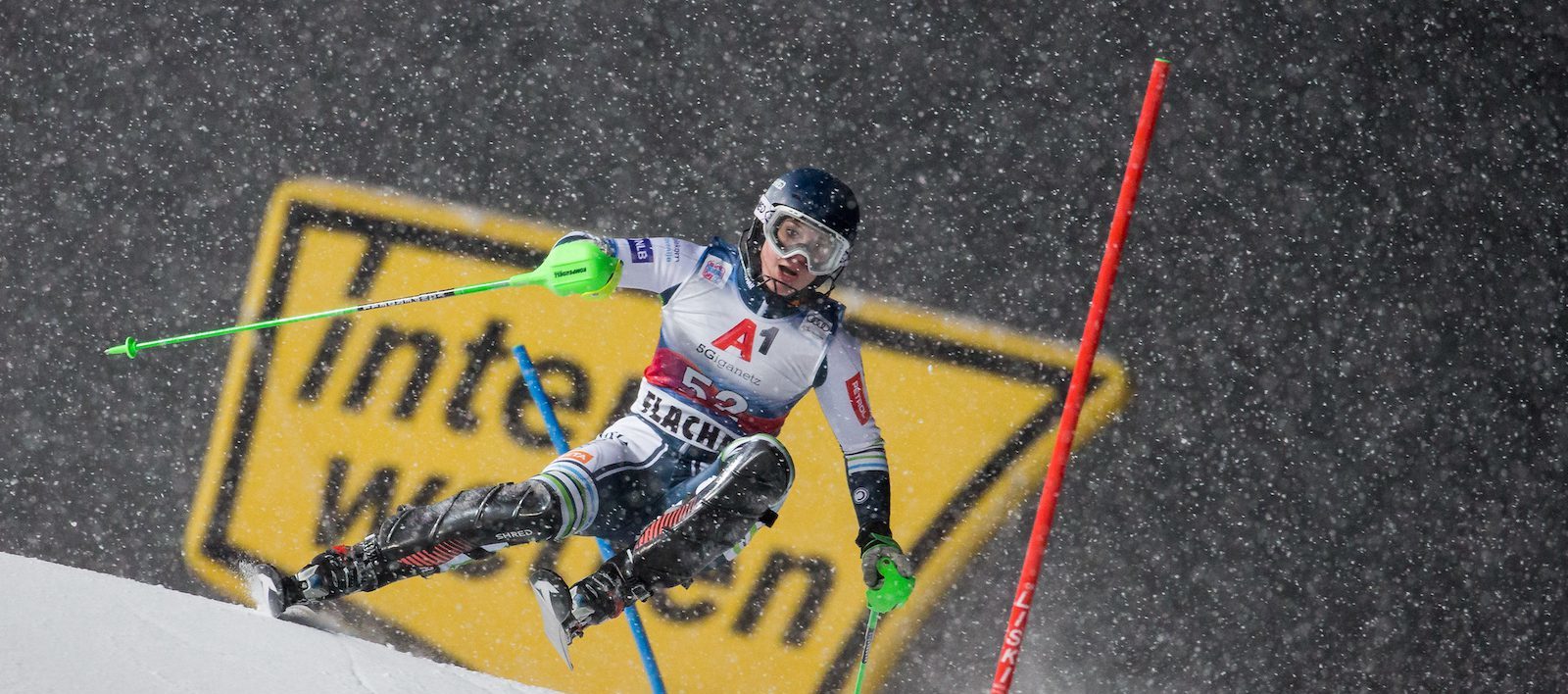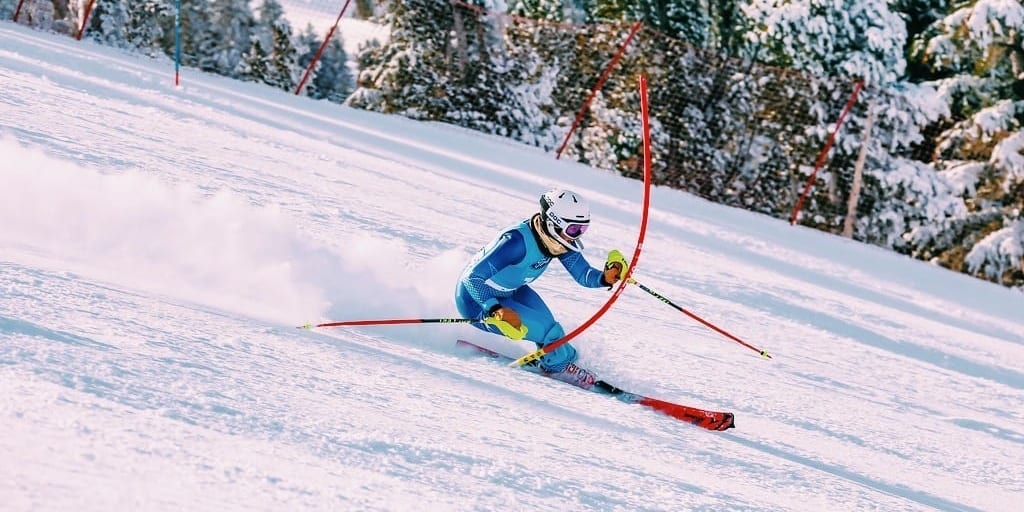Major Change To Equipment Rules Equals Victory For USSA Racers
About a year ago, USSA’s Alpine Sport Committee unanimously voted to approve new equipment regulations aimed at standardizing equipment for FIS and USSA competitions across the country for athletes in the U19 and above age groups. A decision this sweeping stirred up lively debate; after a season of careful evaluation and discussions with individuals at all levels of the sport, USSA has backtracked on past changes and adopted a more inclusive equipment matrix for the 2017-2018 season.
With these new changes, U19 and older athletes will be permitted to compete at USSA races on equipment that adheres to the U16 equipment rules, namely on giant slalom skis that have a minimum radius of 17 meters and no length restrictions. Last season, those athletes would have had to compete on a FIS-legal GS ski with a much larger radius and minimum length restrictions.
The primary point of concern with the old matrix was that it required U19 and older athletes compete on FIS-regulated equipment when racing at the USSA level, a decision seen by many as one that would push countless racers who are either unwilling or unable to make the jump to FIS racing out of the sport for good.
USSA Alpine Development Director Chip Knight established two task forces over the winter to dive deeper into the concerns bought to the ASC by the membership. Ultimately, their findings were the driving force behind this new direction.
“A year ago, the Alpine Sport Committee voted to approve those changes that were put in place last year and in the fall approved a 30-meter GS ski for ladies trying to be proactive,” explains ASC member Paul Van Slyke. “Those votes were unanimous at the time so it’s funny that the work of two task forces that were in place over the course of the winter really changed the focus and the learning that took place was remarkable; it was really a pleasure.”
 Van Slyke also says that more people have become sympathetic to the smaller pockets of recreational-track USSA racing found in parts of the country not traditionally known for churning out U.S. Ski Team athletes or NCAA Division I skiers.
Van Slyke also says that more people have become sympathetic to the smaller pockets of recreational-track USSA racing found in parts of the country not traditionally known for churning out U.S. Ski Team athletes or NCAA Division I skiers.
One such pocket of the country exists in New York state. With the exception of clubs in the Lake Placid area and a few athletes from small clubs who have risen to the national team ranks, much of the racing in the state is geared more toward the recreational USSA level. Not surprisingly, last season’s regulations hit the New York State Ski Racing Association’s (NYSSRA) membership hard.
“A year ago when the ASC made [its] ruling, in our opinion, they just still didn’t understand,” says NYSSRA Treasurer Mark Sertl. “In our belief, there was still this big disconnect between the FIS program and club-level kids. That was just very frustrating that there was no representation on that committee of grassroots athletes.”
Although the initial ruling disappointed Sertl and some other NYSSRA officials, the group did not see the setback as the end of the road. Instead, they put in some hard work last fall and winter crafting a strategy to address the situation.
“Basically, we thought we couldn’t quit,” he says. “We had a couple conference calls with Tiger (Shaw) and Chip and in the fall they were still very polite listening to us but made no assurances that anything was going to change. Given that, we just decided that we had to go do it ourselves.”
Instead of pursuing a traditional route of recruiting older coaches and officials to come around to their way of thinking, they instead targeted the various athlete representatives on the Eastern Alpine Committee in order to shore up support for an eventual proposal to amend the equipment rules. Sertl says that athlete representatives were chosen because of their recent racing experience which ultimately made them more open minded about changes.
These bottom-up efforts were the driving force behind Knight’s decision to form the task forces in order to look into how the equipment rules affected racing at the USSA level as well as domestic development as a whole. The findings from these task forces as well as a meeting between Knight and various U16 coaches at last season’s U16 Nationals in Sugarloaf, Maine, served to further Sertl’s cause.
“Chip Knight did a fantastic job organizing a meeting with our highest-level U16 coaches, and that meeting really changed the whole focus of the task force,” Van Slyke says. “The comments that came back were enlightening in terms of how they saw USSA ski racing.”
Knight and the rest of the ASC concluded that in the United States, U19 competition is separated into two different categories: FIS racing and USSA. Although most U19s do race at least some FIS, there are a significant number of athletes who only race USSA and compete on a more participatory basis rather than an elite one.
The ASC’s volte-face on this issue is a shining example of how USSA and its membership can work together to change rules or regulations in order to better serve athletes of all ability levels.
“Tiger never shut us down,” Sertl says. “I give him a lot of credit for that because I’ve been on this equipment horse for a long time and I’ve never really had much support at all. And Tiger, once he became CEO, he certainly listened to us.”
“When you look back, it’s hard to believe that we are a stark opposite from where we were a year ago,” adds Van Slyke.” But I don’t think there’s anybody involved that doesn’t believe that we ended up in the right place.”






















